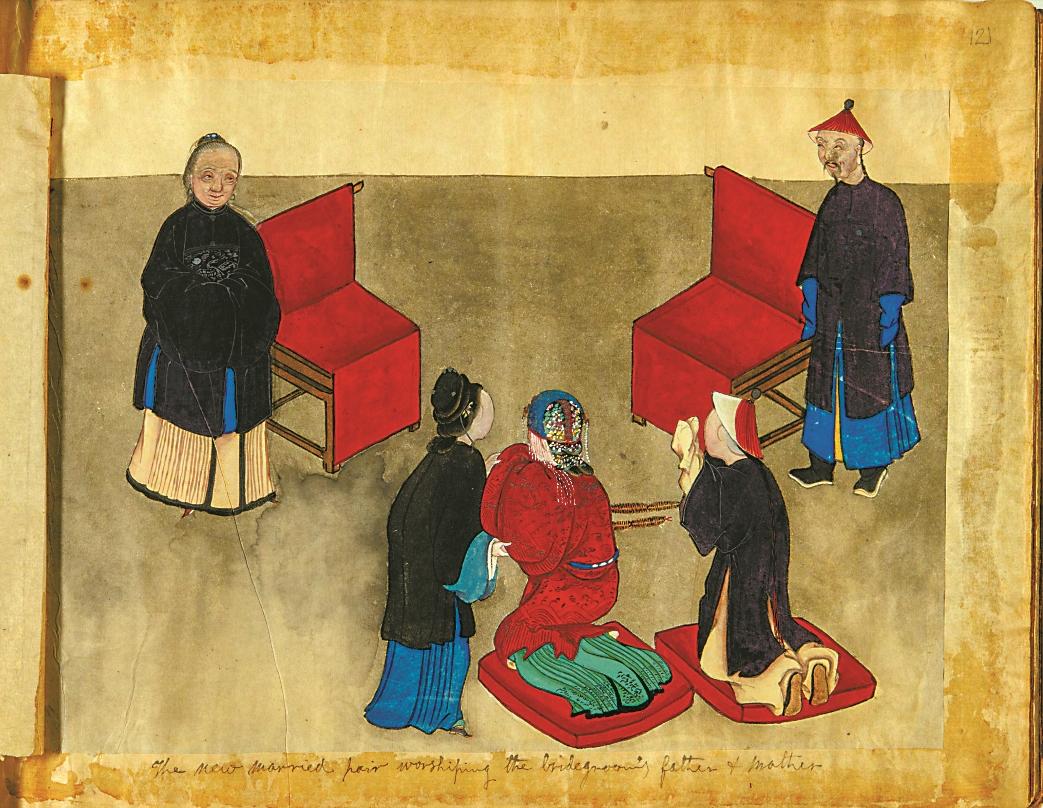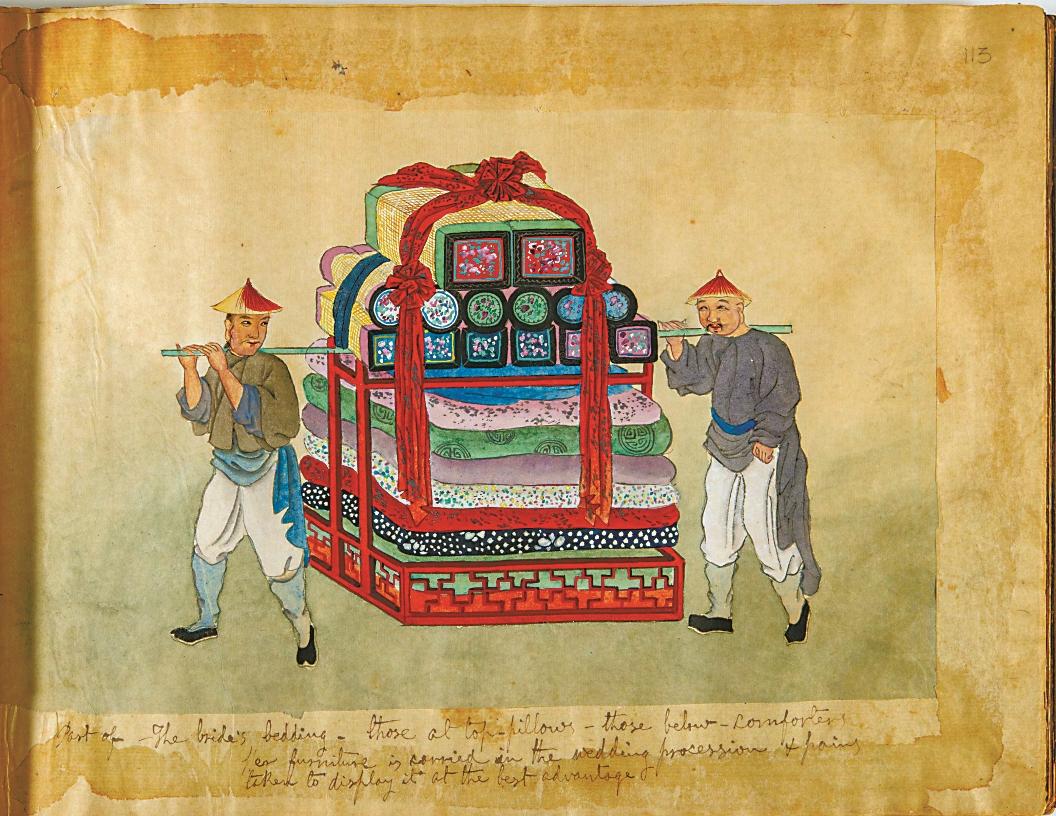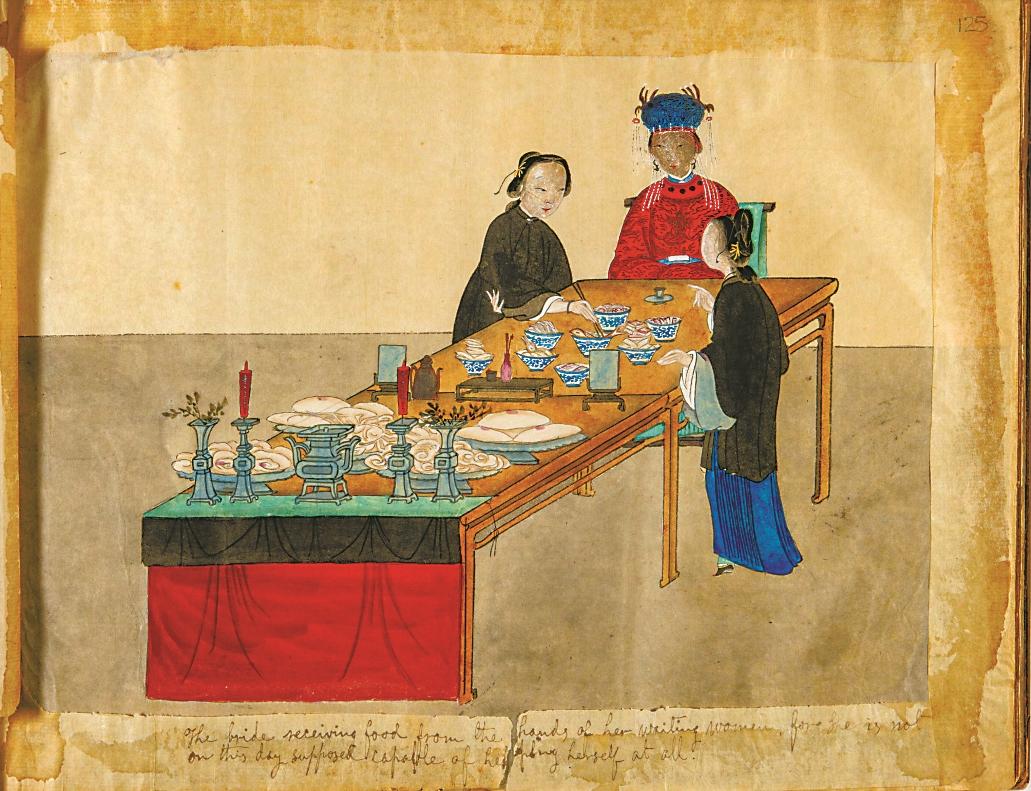This is a brand-new discovery for our serials of “Ningbo in Overseas Memories”.
A picture album — named Sketches of life in Ning-po — was recently dug out by Yuan Yong from the digital collections of Hamilton College library, USA. Yuan, who is adept at collecting foreign documents on Ningbo, shared his latest find in a local chat group.
The picture album contains 98 colored illustrations, 34 of which are sketches of various boats in Ningbo. It also includes more than 20 illustrations depicting the entire process of a local wedding ceremony and around 20 illustrations related to all walks of life in this port city of eastern China. For each picture there are descriptive texts in English for reference.
Large-scale colored illustrations like “Sanyuan Xuan Tea Shop”, “a religious procession of Red Clouds Society”, “jugglers-rope dancers”, and “theatrical exhibition of village opera on waters” offer us abundant visual materials of Ningbo in the late Qing Dynasty (1636-1912).
Multiple name cards of high-level officials in Ningbo at the time can be found on the last few pages of the album, including Bi Chengzhao, Lu Zechang, Wei Hanli, Shu Gongshou, Shen Xiangting, Wang Pixian, Lu Xinlan, and so on. Judging by the images and personnel information, it can be inferred that the album was compiled around 1849.
With its color and paper preserved in good condition, this album stands as the first major discovery of colored painting exports in Ningbo. The collection demonstrates distinctive customs and features of the city, distinguishing itself from its counterparts of Guangzhou which was established as a treaty port simultaneously with Ningbo. In particular, the album provides invaluable documentation of various boats and local wedding customs.
A Wedding from 175 Years Ago
175 years ago, Ningbo witnessed a traditional wedding between the Zhou family, known for their roles as county officials, and the Wang family, who are connected with “the Board of Audit and Inspection, a government division.”
One of the illustrations captures people raising lanterns, with a long handwritten note in English below. As Hamilton College Library interprets, it reads: “The night of a wedding procession ― the first pair of lantern bearers belong to the bride groom’s family ― on one lantern is the name of the family.”
The wedding procession stands out for its length and scale. Groups of men carry the bride’s dowry, including bedroom furniture, pillows wrapped in straw mats, and quilts with various patterns. The website notes that “all the pillows and comforters are in pairs so as to indicate two people always having each other's company and good luck.”
The procession also features various types of musical performances, including gongs, trumpets, drums, and cymbals. The performers are composed of dedicated teams for large gongs and trumpet players, as well as children’s ensembles for drums and lanterns, among others.
The sketches elaborate on the complete rituals that the bride engages in with vivid and delicate paintings. She is seated in an exquisite Wangong Sedan Chair, which is described in the manuscript as “covered with ornamental work ― very expensive and imposing ― in this the bride is shut ― the door locked and key given to the master of ceremonies who carries it to the bridegroom ― the bride is carried in this from her father’s house to the house of her spouse ― often crying along the road.”
At the wedding, the bride ― veiled in red and supported by her “waiting woman” ― and the bridegroom kneel to honor and seek blessings from “the sky, the earth, the saint, the relatives and the teachers”, which are objects of worship for the Chinese.
The next step is to lead the couple to their “private apartment”. The bride, still wearing her red veil, holds the skirt of her husband’s robe as they walk towards the bridal chamber.
The bride waiting in the bridal room is portrayed in two paintings. The table is set with prepared dishes, rice buns sealed with red stamps, and wine glasses. The bride receives food from the hands of her waiting women for she is considered “not on this day supposed capable of helping herself at all.”
Another painting depicts the scene of “disturbing the bridal room”. Inside the bridal chamber beyond the full-moon-shaped gate, the bride’s veil is removed, and “others of the invited guests have license to come and make their remarks upon the lady’s looks and garments and deportment.”
The next scene shows the newlywed couple worshiping the bridegroom’s parents, which likely takes place the following morning.
In addition, other paintings capture men in the groom’s procession, wet nurses, and “waiting women”. The richness and authenticity of these illustrations offer an immersive experience, as if you are witnessing the ceremony firsthand.





